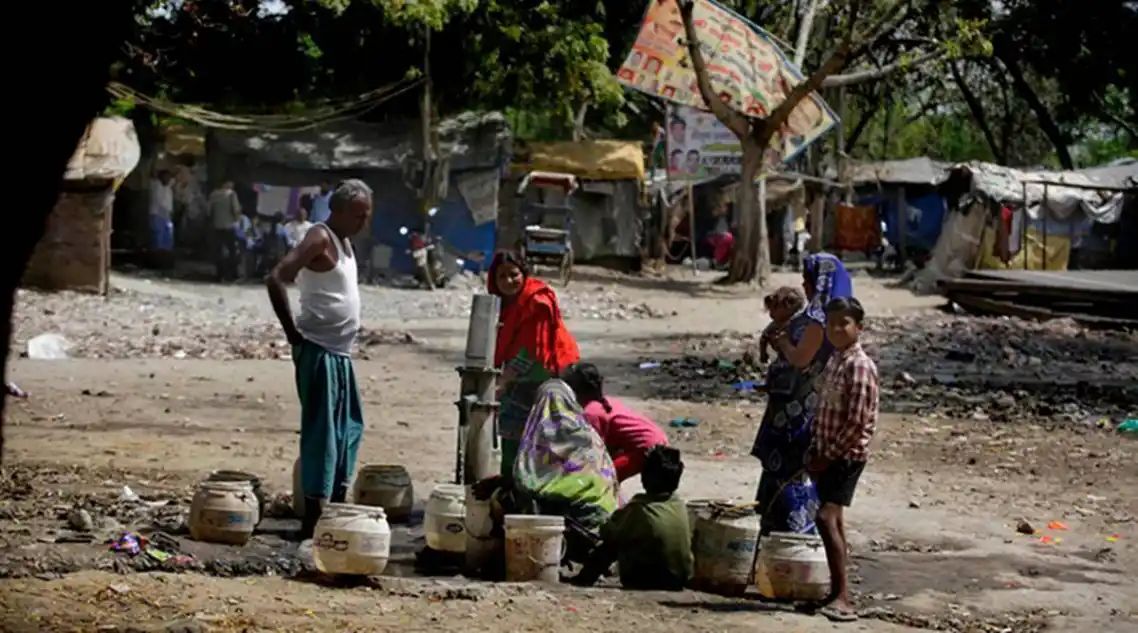Ahmedabad: In a petition on the restoration of 75 slum inhabitants expelled for the Mumbai-Ahmedabad bullet train project, the state, Ahmedabad Municipal Corporation (AMC), and projectile train specialists submitted under the steady gaze of the Gujarat High Court that the removed people can’t be considered as “project-influenced” and are not qualified for benefits under the resettlement and recovery policy.
The public interest litigation (PIL), filed by Ahmedabad-based trade union Bandhkaam Mazdoor Sangathan, had highlighted that slum dwellings at JP ni Chali in Sabarmati area came into existence in 1991 with migrants from different districts and had grown to 68-70 slum dwellings with a population of 350 by 2021.
The residents were first attempted to be evicted in 2018 by the state and railway authorities for the bullet train project. However, as submitted by the advocate Hetvi Patel representing the petitioner union, in 2018, National High Speed Railway Corporation Limited (NHSRCL) came to survey the area and a verbal assurance was given to the slum dwellers that they will not be asked to vacate the land unless they were rehabilitated.
The agency gave numbers to 48 slums and took pictures of the residents with their houses. It also assured the residents that they will be allocated houses under the Pradhan Mantri Awas Yojana or the state policy for affordable housing.
However, between 2018 and 2021, no rehabilitation process was carried out and the dwellers continued to live at the site, where they had been residing for 30 years.
In February this year, they were issued a common notice by the railway administration to vacate the site in seven days, following which the dwellers made representations to various authorities. On March 15, the railway administration started demolishing the settlements, leaving 318 persons homeless.
In an order of June 30, the Gujarat HC instructed the Ahmedabad district administration to undertake an exercise as per the provisions of the Right to Fair Compensation and Transparency in Land Acquisition, Rehabilitation and Resettlement (RFCTLARR) Act, 2013 to determine the eligibility and entitlement of rehabilitation, while giving a fair opportunity of hearing to all stakeholders. The state in an affidavit submitted that 18 slum dwellers were existing on the alignment line of 22 square metres of land that was “given to NHSRCL”.
The state government has now submitted that none of the residents are liable for any benefit under the rehabilitation policy. The Ahmedabad Municipal Corporation (AMC) has also submitted that it does not have any policy for rehabilitation for slum dwellers living on railway land. Western Railways, too, has submitted that they do not have any rehabilitation policy for them.
NHSRCL, the executing authority of the bullet train project, has submitted that while there are 18 hutments on the alignment of the project, they will not be liable for rehabilitation as they were not residing at the site before 2017, which as per the NHSRCL policy, is deemed as the cut-off date to be eligible for the particular rehabilitation policy.
Referring to satellite images from 2015 to 2021, Patel submitted that the images show the presence of the 18 hutments at the site, and argued that the NHSRCL’s submission “is not factually correct”.
State’s counsel, government pleader Manisha Shah, submitted on Tuesday that the land “belongs to railway authority which it is giving to NHSRCL” and that the provisions of RFCTLARR “says that question of rehabilitation comes when land is acquired”.
Adding that the dwellers have no established possessory rights over the land, Shah submitted, “…there is no acquisition taking place, R&R (resettlement and rehabilitation) does not come (into play)… railway authorities could consider if they can give them some alternate arrangements… Railway authorities have filed an affidavit pointing out that railway lines are frequently prone to encroachment so periodically every 2-3 years they have a drive, where they remove the encroachments. Unfortunately, sometimes, most of them come back…”
“So far as AMC is concerned, they say we do have rehabilitation… but you do not come under R&R policy… they are not project-affected… Railways says that (for encroachment) on railway lines, we do not give alternate accommodation because this is a regular feature (of encroachment) that we see,” Shah added.
However, the petitioner’s advocate pointed out that three others — one running a tea stall and two others running small stalls — 50 metres away from the slum dwellings, were deemed eligible for resettlement and rehabilitation policy by the NHSRCL, arguing that then the 18 hutments should also be eligible for the benefits.
The division bench instructed the petitioner to provide a copy of the NHSRCL’s notification of eligibility of rehabilitation and resettlement to the three other persons, to the respondents and has sought the respondent’s submission. The court is expected to take up the matter for further hearing on November 18.



